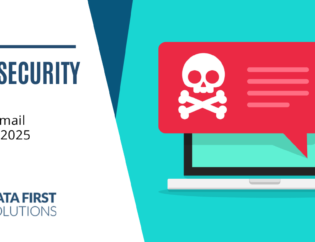
However, the deployment of AI in business comes with ethical, legal, and societal implications that cannot be overlooked. Establishing clear guidelines and rules for the use of AI within your organization is paramount to ensure ethical practices, mitigate risks, and foster trust among stakeholders.
Understanding the Importance of AI Use Rules
In today’s data-driven world, AI algorithms play a significant role in shaping business strategies and operations. However, without proper regulations in place, the misuse or unintended consequences of AI systems can lead to severe repercussions, including legal liabilities, reputational damage, and loss of customer trust. Therefore, it’s crucial for businesses to proactively set up rules governing the development, deployment, and usage of AI technologies.
Ensuring Ethical and Responsible AI Practices
Ethical considerations should be at the forefront when setting up AI use rules. Businesses must ensure that their AI systems adhere to principles of fairness, transparency, accountability, and privacy.
Discriminatory biases embedded in AI algorithms can perpetuate social inequalities and undermine trust in the technology. By implementing ethical guidelines, businesses can mitigate these risks and demonstrate their commitment to responsible AI use.
Compliance with Legal and Regulatory Frameworks
Legal compliance is another critical aspect of AI governance. Businesses must align their AI use rules with existing laws and regulations governing data protection, consumer rights, intellectual property, and cybersecurity. Failure to comply with these legal requirements can result in hefty fines, legal disputes, and damage to the company’s reputation. Regular audits and assessments of AI systems can help ensure ongoing compliance with evolving regulatory landscapes.
Tips for Setting Up Effective AI Use Rules
Establishing comprehensive AI use rules requires careful planning and consideration of various factors. Here are five tips to help businesses navigate this process effectively:
1. Define Clear Objectives and Scope
Before drafting AI use rules, it’s essential to define clear objectives and scope for their implementation. Identify the specific AI applications and use cases relevant to your business operations. Consider the potential impact of AI on different stakeholders, including customers, employees, and shareholders. By clearly articulating your goals, you can tailor the rules to address specific risks and priorities.
2. Involve Stakeholders Across the Organization
Developing AI use rules should be a collaborative effort involving stakeholders from across the organization, including executives, legal experts, data scientists, and IT professionals. Each department brings unique insights and expertise to the table, ensuring that the rules are comprehensive and well-rounded. Encourage open dialogue and feedback throughout the rule-making process to foster buy-in and consensus.
3. Assess Risks and Mitigation Strategies
Identify potential risks associated with AI use and develop mitigation strategies to address them effectively. Common risks include algorithmic biases, data breaches, model failures, and regulatory non-compliance. Conduct thorough risk assessments to evaluate the likelihood and impact of these risks on your business. Implement safeguards such as algorithmic fairness tests, data encryption protocols, and contingency plans to mitigate risks proactively.
4. Establish Transparency and Accountability Mechanisms
Transparency and accountability are essential principles for building trust in AI systems. Establish mechanisms to ensure transparency in how AI algorithms make decisions and process data.
Document the data sources, algorithms, and decision-making criteria used in AI applications. Additionally, designate roles and responsibilities for overseeing AI governance and compliance within the organization. Hold individuals accountable for adherence to AI use rules and ethical standards.
5. Continuously Monitor and Adapt
AI technology and its surrounding ecosystem are constantly evolving. Therefore, it’s crucial to continuously monitor the effectiveness of AI use rules and adapt them as needed.
Stay informed about emerging trends, best practices, and regulatory developments in the field of AI governance. Regularly review and update your AI use rules to reflect changes in technology, business objectives, and regulatory requirements.
Implement These Rules Today
Setting up AI use rules is essential for businesses seeking to harness the benefits of AI while minimizing risks and ensuring ethical practices. By understanding the importance of AI governance, involving stakeholders, assessing risks, establishing transparency, and continuously monitoring compliance, businesses can navigate the complexities of AI deployment effectively.
At Data First Solutions, we specialize in helping organizations develop and implement robust AI governance frameworks tailored to their unique needs. For expert guidance on setting up AI use rules at your business, contact us today.









